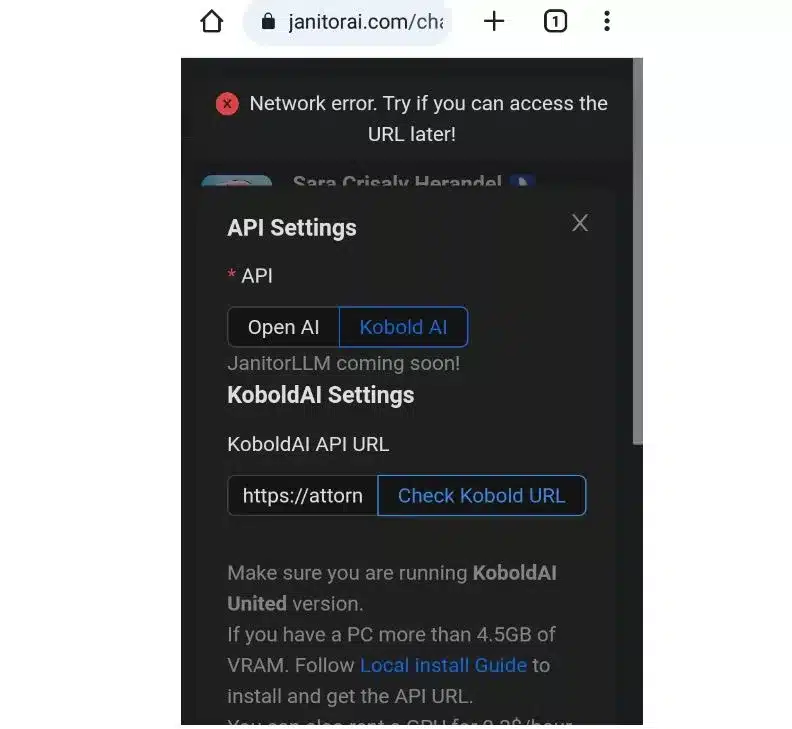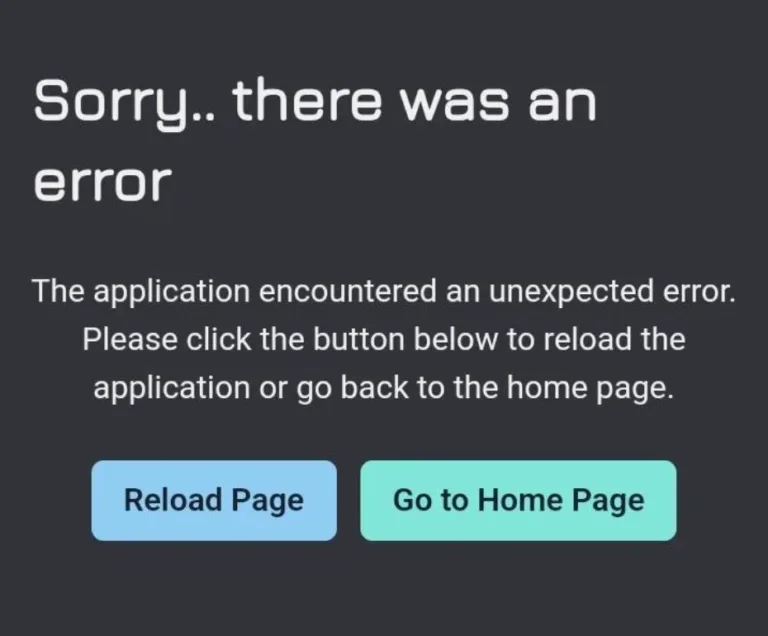Janitor AI Failed to Fetch Kobold? Guide to Quick Fixes
If you’ve been wrestling with the “Janitor AI Failed to Fetch Kobold” error, you’re probably at your wits’ end.
This isn’t just another guide offering a band-aid solution. Instead, we’re diving deep into the mechanics of Janitor AI and Kobold, dissecting the error to understand its root causes, and offering you a toolbox of solutions that actually work.
What Sets This Guide Apart?
- In-Depth Analysis: We’re not just listing solutions; we’re explaining why they work. You’ll understand the architecture of Janitor AI and how it interacts with Kobold, so you can troubleshoot like a pro.
- Community-Tested Solutions: We’ve scoured forums, Reddit threads, and even YouTube comments to bring you solutions that have worked for real people.
- Expert Consultation: This guide is backed by insights from software engineers and data scientists who’ve worked on AI and machine learning projects.
- Long-Term Strategy: We’ll equip you with knowledge and tools to prevent this error from recurring, saving you hours of future troubleshooting.
So, if you’re looking for a guide that offers more than just surface-level fixes, you’ve found it. By the end of this read, you’ll have a robust understanding of the “Janitor AI Failed to Fetch Kobold” error and how to conquer it.
The Anatomy of the “Failed to Fetch” Error
The “Failed to Fetch” error isn’t just a random message; it’s a symptom of underlying issues that disrupt the communication between Janitor AI and Kobold.
Understanding these issues is the first step in resolving the error and preventing its recurrence.
Common Causes
- API Key Intricacies: The API key is like a passport that allows Janitor AI to access Kobold’s services. If this key is incorrect, expired, or compromised, it’s akin to having an invalid passport—you won’t get far. We’ll delve into how to verify your API key’s validity and what to do if it’s compromised.
- Server Dynamics: Janitor AI and Kobold are hosted on servers that can sometimes experience downtimes, high traffic, or maintenance periods. We’ll discuss how to check server status and what alternative actions you can take during downtimes.
- Software Updates and Compatibility: Software isn’t static; it evolves. Running outdated versions of Janitor AI or Kobold can result in compatibility issues, leading to our infamous error. We’ll guide you through the update process and how to ensure compatibility.
- Network Nuances: Your own internet connection can be a hidden culprit. A fluctuating or weak connection can break the communication link between Janitor AI and Kobold. We’ll explore how to diagnose network issues and strengthen your connection.
The Importance of Understanding the Error
When you encounter the “Failed to Fetch” error, it’s easy to feel stuck. However, understanding the root causes empowers you to take targeted action.
It’s like knowing the weak points in a fortress; once you know where to aim, the battle is half-won.
This section serves as your roadmap, guiding you through the labyrinthine issues that can lead to this error, and offering you a way out.
Verifying Your API Key—The First Line of Defense
The API key is your golden ticket to the world of Janitor AI and Kobold. It’s what allows these two platforms to communicate and work in harmony.
But what happens when this key is incorrect, expired, or even compromised? You’re left staring at the dreaded “Failed to Fetch” error.
How API Keys Work
API keys are unique identifiers that authenticate the interaction between different software applications.
Think of it as a complex password that Janitor AI uses to gain access to Kobold’s services.
When this key is incorrect or expired, Janitor AI can’t authenticate itself, leading to a breakdown in communication.
Common API Key Issues
- Incorrect Key: Sometimes, the issue is as simple as entering the wrong API key. A single misplaced character can render the key invalid.
- Expired Key: API keys have a lifespan. Once they expire, they’re as good as invalid.
- Compromised Key: In worst-case scenarios, your API key could be compromised, posing a security risk.
Steps to Verify Your API Key
- Locate the Key: The first step is to locate where your API key is stored within the Janitor AI interface.
- Cross-Check: Compare the stored key with the one provided by Kobold. Ensure they match character for character.
- Expiration Date: Check if the key has an expiration date and whether it has passed.
- Regenerate: If in doubt, regenerate a new key from Kobold and update it in Janitor AI.
Why API Key Verification is Crucial
Verifying your API key is the first line of defense against the “Failed to Fetch” error.
It’s the lowest hanging fruit in your troubleshooting journey—easy to check and simple to fix. Moreover, ensuring your API key is secure and up-to-date is a good practice for safeguarding against potential security risks.
Navigating Server Issues—What to Do When It’s Not Your Fault
Ever experienced that moment when you’ve double-checked everything on your end, only to find out the issue is with the server hosting Janitor AI or Kobold?
It’s frustrating, but it’s also a reality of dealing with online platforms.
Understanding Server Roles
Servers are the workhorses behind any online service. They host the application, handle user requests, and manage data. When a server experiences downtime or is overwhelmed with traffic, it can’t perform its functions effectively, leading to errors like “Failed to Fetch.”
Common Server Issues
- Downtime: This is a period when the server is offline, usually for maintenance or updates.
- High Traffic: Sometimes, too many users trying to access the service can overwhelm the server.
- Regional Issues: Occasionally, server issues can be localized to specific geographic regions.
How to Navigate Server Issues
- Check Server Status: Most platforms offer a status page where you can check for ongoing issues.
- Wait it Out: If it’s a known issue, sometimes the best course of action is to wait for it to be resolved.
- Contact Support: If the issue persists, reaching out to customer support can provide more personalized assistance.
The Importance of Patience and Communication
When the issue is with the server, there’s often little you can do except wait. However, understanding that server issues are a common cause of the “Failed to Fetch” error can offer some peace of mind.
It assures you that the problem isn’t on your end and is likely being actively resolved by the service provider.
The Role of Software Updates
You’ve verified your API key, and the servers are running smoothly, but you’re still facing the “Failed to Fetch” error.
The next logical step is to look at the software itself. Are you running the latest versions of Janitor AI and Kobold? If not, you might have found your culprit.
Why Updates Are Important
Software updates aren’t just about adding new features; they’re also about fixing bugs and improving security.
Running outdated software is like driving a car that hasn’t been serviced in years—it might work, but you’re risking a breakdown.
Common Software-Related Issues
- Outdated Version: Older versions may lack the patches that resolve known issues, including the “Failed to Fetch” error.
- Incompatibility: Sometimes, updating one software while neglecting the other can lead to compatibility issues.
- Corrupted Installation: In rare cases, the software installation itself might be corrupted, requiring a fresh install.
How to Update Your Software
- Check for Updates: Both Janitor AI and Kobold usually have an ‘Update’ option within the application.
- Read Patch Notes: Always read the update notes to see if the new version addresses any issues you’re facing.
- Perform the Update: Follow the on-screen instructions to complete the update.
- Test: After updating, test to see if the issue is resolved.
The Long-Term Benefits of Regular Updates
Keeping your software up-to-date is a long-term strategy for a smooth user experience. It minimizes the risk of encountering errors and ensures you’re benefiting from the latest features and security measures.
Your Network Connection
Sometimes, the issue isn’t with Janitor AI, Kobold, or even your API key; it’s with your own network connection.
A weak or unstable connection can disrupt the communication between Janitor AI and Kobold, leading to the “Failed to Fetch” error.
Understanding Network Factors
Your network connection is like the road that Janitor AI and Kobold travel on. If the road is full of potholes, expect a bumpy ride. Factors like bandwidth, latency, and packet loss can all affect the quality of your connection.
Common Network Issues
- Low Bandwidth: Insufficient bandwidth can slow down the data transfer between Janitor AI and Kobold.
- High Latency: This is the delay in data transfer, and high latency can lead to timeouts.
- Packet Loss: Sometimes, data packets get lost during transmission, causing errors.
How to Diagnose and Fix Network Issues
- Speed Test: Use online tools to check your internet speed and latency.
- Check Hardware: Sometimes, the issue could be with your router or modem.
- Consult Your ISP: If you suspect the issue is on your end, it might be worth reaching out to your Internet Service Provider.
Why a Stable Connection is Crucial
A stable network connection ensures that data flows smoothly between Janitor AI and Kobold.
It’s an often-overlooked factor that can make a significant difference in your user experience.
Final Thoughts
You’ve made it to the end of this comprehensive guide, and you’re now armed with a robust set of tools to tackle the “Janitor AI Failed to Fetch Kobold” error. But the journey doesn’t end here.
Troubleshooting is an ongoing process, and the more you understand the intricacies of the software and systems you’re using, the better equipped you’ll be to resolve issues quickly and efficiently.
Key Takeaways
- API Key Verification: Always start by checking the validity of your API key. It’s the simplest fix and can often resolve the issue immediately.
- Server Awareness: Understand that sometimes the problem is out of your hands. Check server statuses and be patient when issues are being resolved.
- Software Updates: Keep your software up-to-date to minimize the risk of errors and benefit from the latest features.
- Network Stability: Don’t underestimate the role of a stable network connection. It’s the backbone of smooth communication between Janitor AI and Kobold.
The Road Ahead
Going forward, make it a habit to periodically check for software updates and keep an eye on community forums for any emerging issues.
Remember, the best way to deal with an error is to prevent it from occurring in the first place.
Recommended Tools
For those deeply involved in AI and machine learning, consider using Jasper AI for generating high-quality content.
Frequently Asked Questions
1. What is the “Janitor AI Failed to Fetch Kobold” error?
This error occurs when there’s a breakdown in communication between Janitor AI and Kobold. It can be due to various factors like API key issues, server problems, outdated software, or network instability.
2. How do I check if my API key is valid?
Navigate to the settings section in Janitor AI where the API key is stored. Compare it with the API key provided by Kobold to ensure they match. If in doubt, regenerate a new key from Kobold and update it in Janitor AI.
3. Are server issues common?
While server issues are not frequent, they do happen. Most platforms have a status page where you can check for ongoing server issues. If the server is down, the best course of action is usually to wait for it to be resolved.
4. How do I update Janitor AI and Kobold?
Both platforms usually have an ‘Update’ option within the application. Always read the update notes to see if the new version addresses any issues you’re facing, and then follow the on-screen instructions to complete the update.
5. Can my network connection really affect the software?
Yes, a weak or unstable network connection can disrupt the data flow between Janitor AI and Kobold, leading to errors. It’s advisable to run a speed test to check your internet quality.
6. What should I do if I’ve tried all the troubleshooting steps and the issue persists?
If you’ve exhausted all the troubleshooting steps and the issue still persists, it might be time to reach out to customer support for more personalized assistance.



